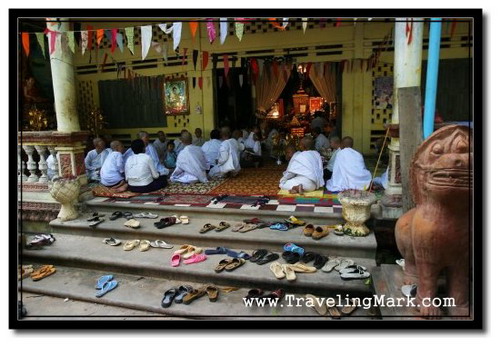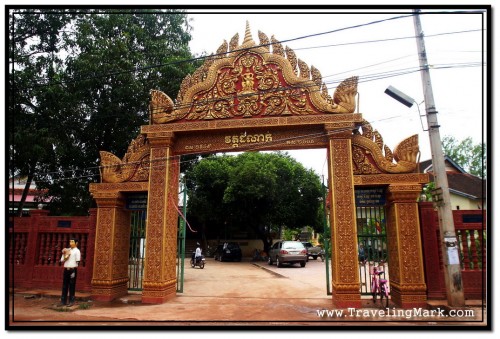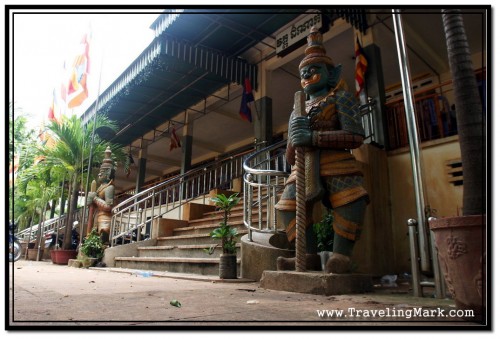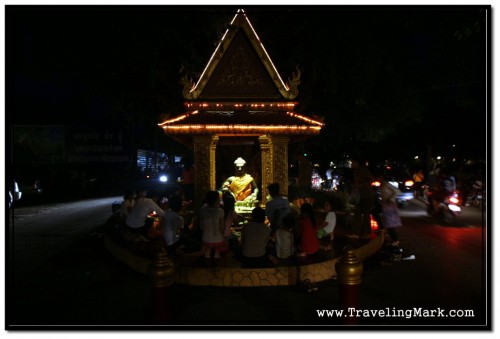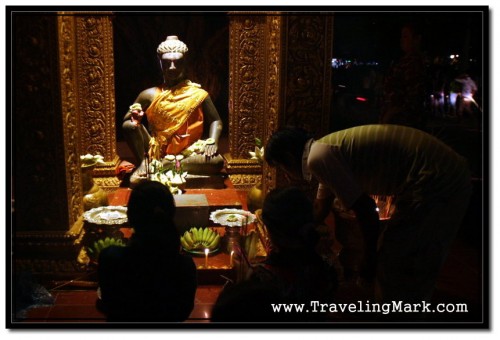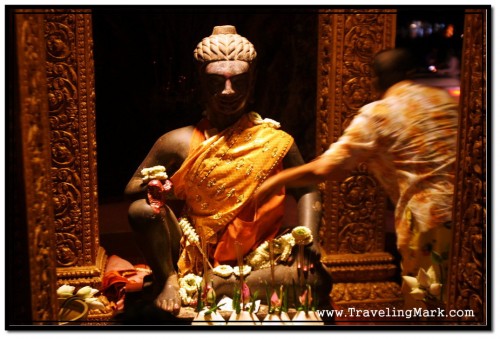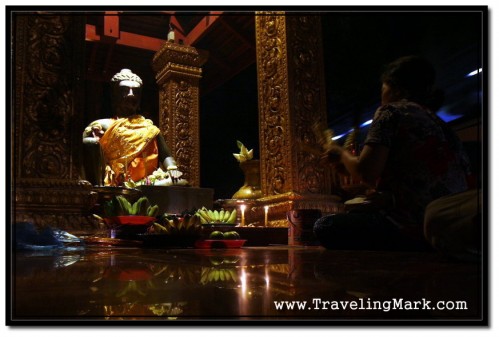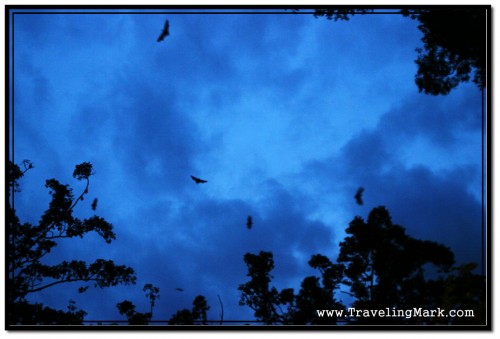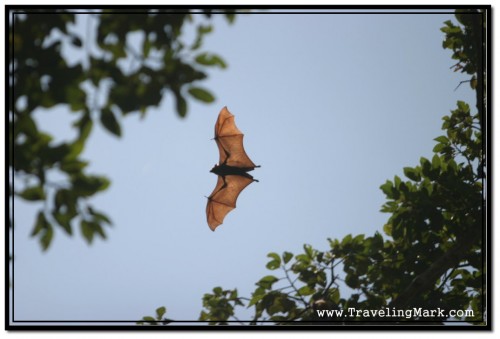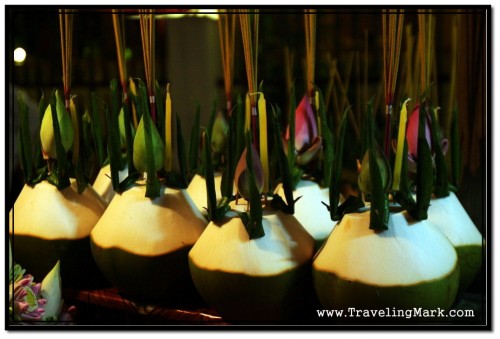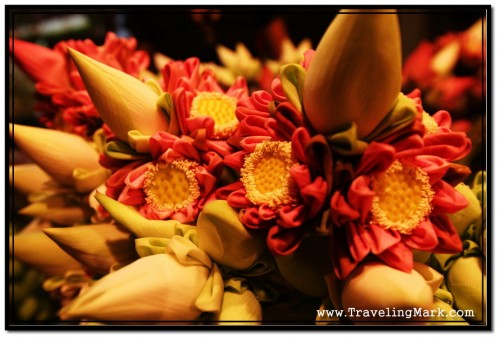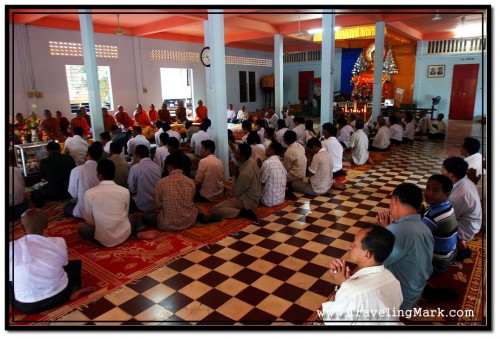No visit to Cambodia would be complete without seeing the Apsara dance performance. Apsara dancing is a classical Khmer dancing art that’s been part of Khmer culture since the Angkorian days. You can see thousands of Apsara dancers carved on the walls of Angkor temples and pagodas all over Cambodia. Even though I had not heard the word Apsara prior to visiting Cambodia, I have quickly become familiar with it as soon as I started exploring Siem Reap. Moving around was much easier now that I had my mountain bike and as I kept riding around town, I noticed several hotels advertising their nightly Apsara Dance performances. There’s so much of it in Siem Reap, than sooner or later every visitor, even if entirely not familiar with Apsara will have heard of it and attended the show to see what it’s all about. I was lucky enough to have stumbled across an Apsara Dance performed at Wat Kesararam by young amateur dancers to get my introduction to Apsara Dancing prior to attending an actual Apsara show for tourists.

As part of Pchum Ben Festival, main vihara (prayer hall) at Wat Kesararam was full of Khmer people who came there to pray and make offerings to their deceased ancestors and monks. Since big feast with many people attending was anticipated on the day I visited the pagoda, locals also organized a little Apsara dance performance to get themselves entertained prior to festivities. The dance was performed by their daughters – amateur but enthusiastic young Cambodians who appreciate their heritage and keep their ancient culture alive.
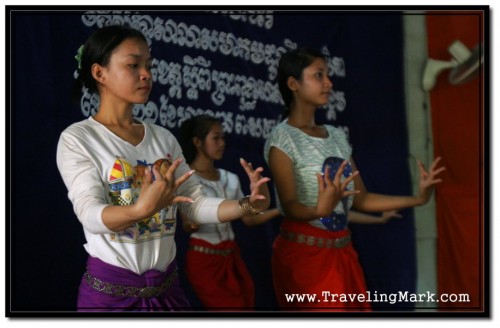
I walked into vihara because there was traditional Khmer music coming from the inside played live by a band and there were many shoes outside suggesting that many people are in there (Buddhists always take their shoes off before entering sacred buildings). Understanding that there was something interesting going on, I took my shoes off, wiped off the sweat from my head and stepped right in where heat was just as devastating and the light was dim.
The vihara was quite spacious with many people inside. It was very dark there. No artificial light, just a little bit coming from the outside through small windows. I was the only Caucasian there, but not the only tourist. There were a few Korean (I think they were Korean, I can’t tell Asian nationals from one another) people sitting close to the improvised stage on which young girls performed slow paced Apsara dance.

I wanted to take some pictures, but it was so dark in there it became extremely difficult. Luckily, Apsara dancing is not about speed. It’s about careful posing and a lot of balance. I had to really improvise with my camera because bad lighting conditions and moving objects (albeit slow moving) make for difficult photography. I tried my best.
Luckily for me, none of the locals made any signs of me being a disturbing element. I tried to be as inconspicuous as possible, but I occasionally moved from one spot to another in efforts to find the best angle with most light. The only other thing moving were the Apsara dancers on the stage so my commotion was easily noticeable. Regardless, nobody came to tell me to sit on my ass and stay quiet. I have been noticing this type of acceptance and tolerance of disturbers from the Western countries all throughout Cambodia. Khmer people in Siem Reap are so tolerant with tourists, they would probably not kick me out of there even if I walked in wearing a hat. Not that I would ever do that, but some other tourists do which I noticed when I started exploring Angkor temples. Such a shame that so many people from the west would show no respect for foreign cultures. Yet even though westerners abuse Cambodian traditions so much, I’ve never seen any local bust them for it. On a side note, perhaps it has a lot to do with how much people of Siem Reap like tourists’ money…

Watching this Amateur Apsara dance – my first Apsara performance – was very enlightening. I really needed a break from the sun, but I also felt lucky I got here just in time to see these girls dancing. It was all very sincere. The dancers have performed several numbers accompanied by the music played by live band on the side of the stage and when they were done, they invited the foreigners to join them and learn how to Apsara dance. I had to respectfully decline this generous offer because I was dripping off sweat like I was in a sauna.
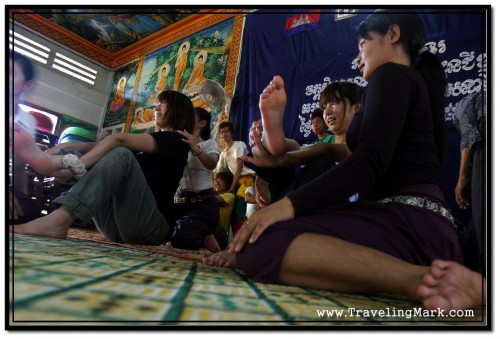
Young Koreans took on the offer and joined the dancers on the stage. That was when I realized how easy Apsara dancing seems when you watch it, but how difficult it is when you actually do it. They were teaching the Korean youth how to strike a pose. Moving from one pose to another was excluded, but let me tell you – any of those poses that seemed to easy when done by the dancers takes years of training to master. Apsara dancing is much trickier than is seems. I could tell by the faces of those Korean tourists that they were struggling big time to get simple poses done and for the most part, none of them could do it right. Apsara dancing is not easy, it just seems easy when you watch skilled dancers do it. These young ladies may have been amateurs, but they were impressive never the less. It was a truly uplifting experience. Too bad it was so hot and not enough light for good pictures.


